

During the early days of the 2016 Venice Biennale, we've spoken with the curators of a few select pavilions to get a read on the ideas behind their exhibitions. For this feature, we share our conversation with Alfredo Brillembourg of Urban-Think Tank and Nina Baier-Bischofberger of Baier Bischofberger about their project, Sarajevo Now.
Since undergoing the longest military siege in the history of modern war, the city of Sarajevo has been “held hostage in a situation of political paralysis with no end in sight,” according to the curators of Sarajevo Now. Without adequate funding for cultural institutions, the city’s museums and cultural heritage have been left to slowly decay. The exhibition proposes a lightweight intervention for the city’s national museum to instigate renewed interest in preserving Sarajevo’s patrimony.

An official, collateral event of the 15th Venice Biennale, Sarajevo Now was commissioned by Matica of Bosnia and Herzegovina and is sponsored by the Historical Museum of Bosnia and Herzegovina. Located in the Arsenale, Sarajevo Now asks a “simple”—but certainly loaded—question: “can a museum be a force for change in a city?”
We talked with the curators to learn more about Sarajevo Now and its context.
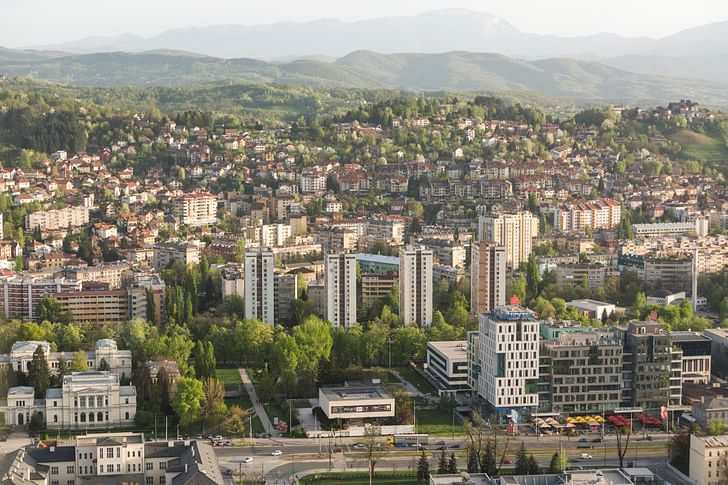
The description of the project reads: “Ravaged by war and siege, Sarajevo is today held hostage in a situation of political paralysis, with no end in sight.” Could you briefly sketch out this context for those who might not be familiar with what’s happened in Bosnia and Herzegovina since the war?
Nina Baier-Bischofberger: Since the end of the war in 1995 and the implementation of the Dayton Agreement for governing the country, there has been very little funding for culture. A lot of Bosnia’s museums and cultural institutions are in Sarajevo, but there is no national culture ministry, and a combination of financial difficulties and political impasse over dealing with issues of common cultural heritage means these museums are starved of funds. They can’t operate, they can’t heat the buildings, they can’t pay their staff. Any money they need, or want, to spend has to be generated independently. Sarajevo is caught in a deadlock. In a way, the war never ended.So culturally, they are held hostage to a government that says “we have no money for you”. They are left in a political vacuum.
Alfredo Brillembourg: Sarajevo is caught in a deadlock. In a way, the war never ended. Although the violence stopped, an ongoing political conflict between different ethnic groups has continued. Unfortunately Sarajevo, which is a cultural capital with an incredible history—Ottoman, Austro-Hungarian, socialist—has not benefited from major outside investment. Just like Saskia Sassen suggested in her book Territory, Authority, Rights, the intellectuals of Bosnia have had to venture beyond their national boundaries to seek funding and alliances, in order to then circle back and stir up internal politics. Intellectuals no longer wait for internal support only, but reach out to come back in.
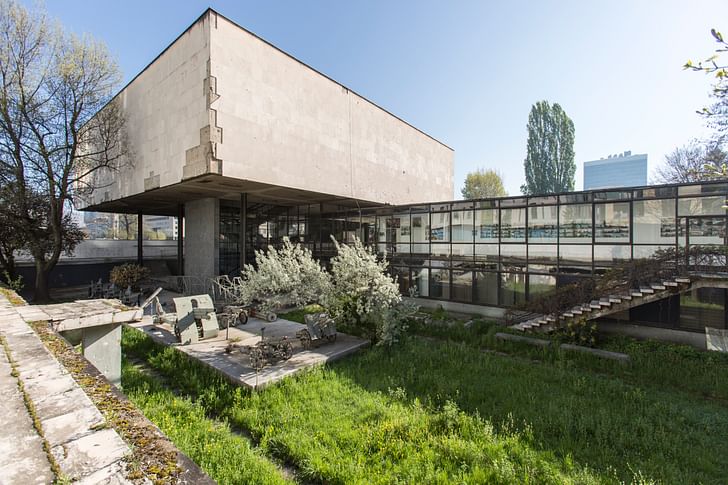
The exhibition focuses on one particular building: the Historical Museum of Bosnia and Herzegovina. What’s the history of this building? Why focus on it in particular?
NBB: The building was erected after the Second World War as the ‘Museum of National Liberation’ to celebrate victory over the Fascists. Tito himself visited after its inauguration. When the war started and Sarajevo came under siege, the museum was abandoned by the city and instead was protected by civilians and staff volunteers. With no funding and support from the national government, after the siege it had to find its own way. Curators created a new exhibit about the siege, and residents brought objects and photos demonstrating how they had survived. The museum has continued to operate since then through a few minimal grants. The rest is the hard work and passion of the people involved to keep it open and operating.The fate of the museum reflects a crossroads faced by Bosnian society as a whole. They believe in a vision of a museum that really tells the history of its people—a ‘People’s Museum’ and cultural center, where citizens can come and make history themselves.
AB: The ‘People’s Museum’ is fully in line with projects Urban-Think Tank has engaged in previously, like our documentation and design research focused on Torre David in Caracas, which embodied the deterioration of a city under the Chavez regime. The building was a physical symbol that conveyed cultural, social, and political scars. In the same way, the Historical Museum in Sarajevo also stands as an anthropological object in which you can read the scars of society. At a political level, it tells a story of abandonment and division. On a social level, it tells a story about the civilians who battled to preserve their heritage. The fate of the museum reflects a crossroads faced by Bosnian society as a whole. What is the symbol of the new capital? Is it a high-rise Hilton tower funded through Azerbaijani petro-dollars, or is it some kind of hybrid between old and new that our project stands for?
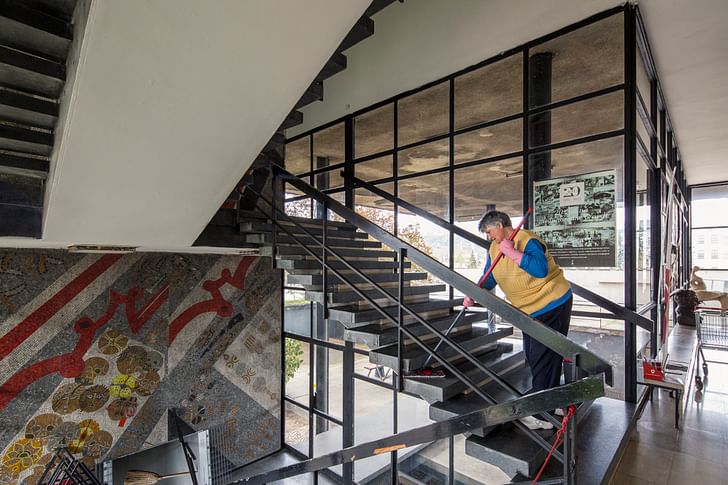
Your project proposes sheathing the entire structure in transparent vinyl leaving “the decay and patina of the original building intact.” Practically, what purpose would such an envelope serve?
NBB: The envelope would actually be covered with a special material made to shrink-wrap scaffolding. We would be shrink-wrapping the structure around the building so that there’s no further deterioration from its current state. The material is waterproof, fire retardant, and UV-resistant. Because zippers can be sewn in, you can also seal the building during the winter to allow for a low-cost heating system—because there’s no heating in the building at present—and then in the summer open the zippers to allow airflow while still preventing rain leakage. If the building is the face—the face of history—the shrink-wrap is the new mask, the mask preserving the buildingThe covering also offers the possibility of new spaces between the existing building and scaffolding structure, which can be activated with programs and attractors.
AB: You can draw an allusion to John Hejduk, who years back told me that he was interested in the space between the face and the mask. If the building is the face—the face of history—the shrink-wrap is the new mask, the mask preserving the building. Temporarily of course. We envisage the project as a short-term plan of ten years until the money can be found to restore the building. In any case, we are interested in the space in-between, which will be filled with new programs. Viewing platforms, workshops, projects, playgrounds, circulation routes. Visitors will be able to use the building in a completely new way. The project has several layers, and it tries to unleash the potential of a temporary scaffolding structure to enable an entirely new reading of the building.
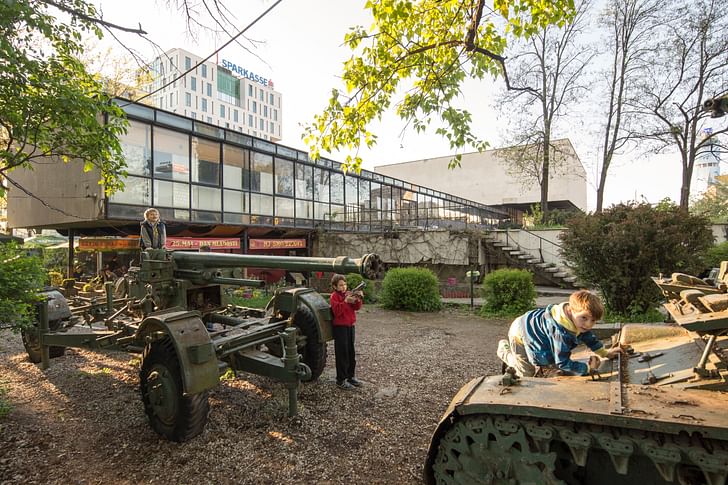
Why preserve a state of decay?
NBB: I don’t think that’s the case. What we’re doing is trying to create a system that protects the building from further decay. A system that can be implemented immediately, and which doesn’t require substantial funding. Instead, we are interested in the possibility of creating a functional space that can still be used while repairs take place. The future of this building is dependent on how the city adopts it, and embraces its expanded function as a cultural center.
AB: Anyone who knows the history of art will know the project of Robert Smithson called ‘Hotel Palenque’. It was a project from 1969 where he photographed an old hotel in Mexico that was in a cycle of simultaneous deterioration and renovation. Although the building looked like it had no value, the idea of ruin and contemporariness suggested a new reading. Why? Cities are built up over time in layers, and Sarajevo represents those layers.Because we tend to see the history of modernism as a utopian project. But if you really understand modernity it is a series of layers. Cities are built up over time in layers, and Sarajevo represents those layers. The covering we’re designing for the museum, and the new interstitial spaces being created, are just adding another layer to the history of the building. So the preservation of the original object is very important.
Curatorially-speaking, what will the exhibition look like and include?
AB: The exhibition obviously includes models and drawings outlining the architectural proposals we’re discussing, but also a number of other components. We will be screening Anri Sala’s powerful film 1395 Days Without Red, and a new short film about the museum shot by Urban-Think Tank earlier this year. The exhibition will incorporate photography from our friends Charlie Koolhaas and Jim Marshall, as well as artifacts from the museum’s collection. It will also feature a retrospective on Urban-Think Tank’s projects that has been shown previously in Zurich and Munich.
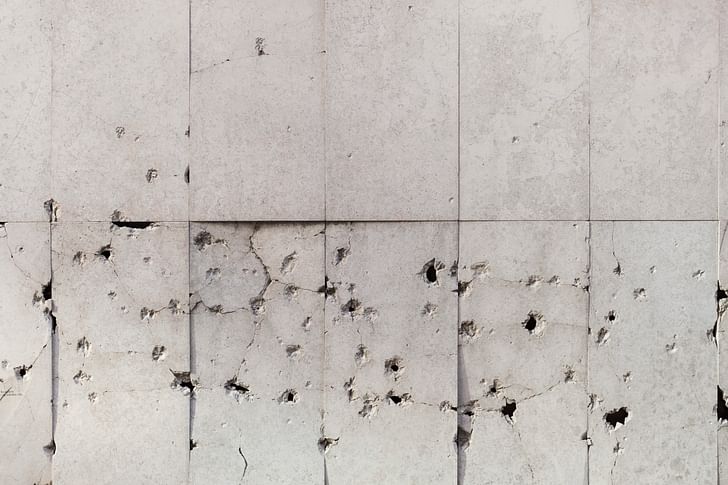
How do you feel your project meshes with Alejandro Aravena’s theme, “Reporting from the Front”?
NBB: I really don’t think that there is any project I could imagine that would define and embrace the theme as much as ours. We are working with a building that was literally on the frontline. During the siege, snipers were shooting at children playing soccer over this building from nearby housing blocks. And due to the fact the city has not fully recovered from the war, the project can be an example for many other cultural institutions worldwide that are going to need new strategies of reactivation after conflicts have ended.Architects have often misunderstood their role.
AB: Aravena has hit on a fantastic theme. Architects have often misunderstood their role. They have focused on large master plans and schemes to change cities. In this case we are being much more prudent, and understand from our work in Latin America and Africa that we can only really achieve small changes. So the small change of reactivating this museum and adding a new layer can have a catalytic effect on the city in the same way that our Vertical Gyms or Metro Cable benefited thousands of people in Caracas. If this museum is correctly handled as a hub, as a lighthouse signaling a rejuvenation of intellectual life in Sarajevo and a rethinking of contemporary European culture, then we will have achieved the idea that the museum will report back from the frontlines to the rest of the world. It has the potential to support the rethinking of urban politics in a very open and creative way.
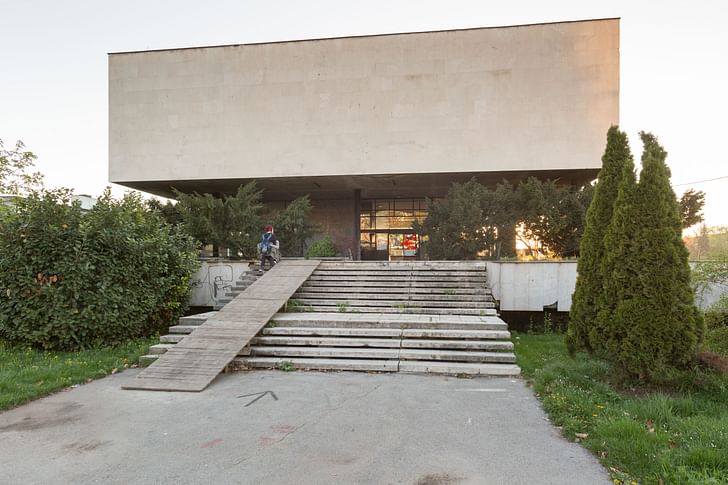
I know that the project is intended to travel to Sarajevo after the event. What’s in store for it back home?
AB: When the project goes to Sarajevo, it’s the moment in which a broader slice of civil society will have the opportunity to appropriate it and generate a mass movement to transform and preserve the museum. We hope that alongside the project we can bring some leading contemporary artists like Anri Sala to come and create new work that could be auctioned to raise the money to realize the project.
NBB: The proposals for this structure are intended as the first step towards reactivating Sarajevo. We will bring it there, show the people what we propose to do, and get them started through a series of events at the museum. We want to invite a broader group of people to join in, to get them excited about what we’re working on together with the museum staff and other local partners. Fundraising is crucial. We need to spread the message that this is a low-cost and realizable intervention. We don’t need much for it, “come and help us”.This is the new modality of architectural practice today.
AB: This is the new modality of architectural practice today. It is the architect as mediator and instigator. In this case a group of intellectuals are rallying around the museum. They want to see the new plans for the museum turned into a reality, and are working under very harsh conditions. Architects are the glue between top-down and bottom-up forces, or in this case an international community with access to funding, artworks, and the media, and a local community that is on the ground working hard to achieve an important vision. So we are doing much more than just designing a scaffolding structure. We are designing a strategy for reactivation that crosses into the realm of the arts and intellectual life. Architects have always played an important role in these areas throughout history.
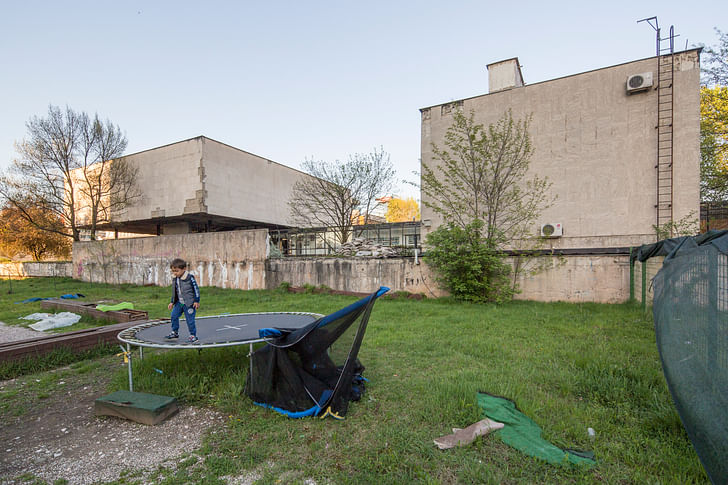
How do you think architecture can contribute, in general, to improving conditions in Sarajevo?
AB: If the traditional role of the architect was in construction, we all know now that the architect is very well trained in a humanist condition to engage in politics. Architects are reinventing themselves through participation in local and national politics that impact the urban context. You could say, for example, that Santiago Calatrava building a new World Trade Center transit hub is a political act. We don’t believe in grandiose gestures, and they have no place in this situation.Architecture is creating a new emblem and symbol for Ground Zero. In the same way, we are attempting with our modest interventions to provide a symbol of hope in Sarajevo. But it’s not a dove. We have been inspired by the very real expressions of solidarity and popular ownership that we have witnessed in the museum community. We don’t believe in grandiose gestures, and they have no place in this situation. We believe in reactivation through a bottom-up process, and as architects we are equipped with the tools to channel the energy and popular will that already exists in Sarajevo to influence further transformations in the city.
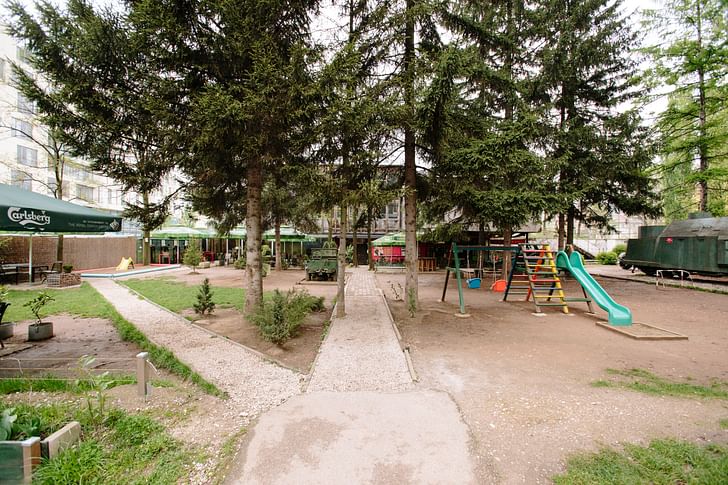
This interview is part of Archinect's theme for May, Help. For more socially-engaged projects and practices, including many from this year's Venice Biennale, follow this link.
Writer and fake architect, among other feints. Principal at Adjustments Agency. Co-founder of Encyclopedia Inc. Get in touch: nicholas@archinect.com
No Comments
Block this user
Are you sure you want to block this user and hide all related comments throughout the site?
Archinect
This is your first comment on Archinect. Your comment will be visible once approved.